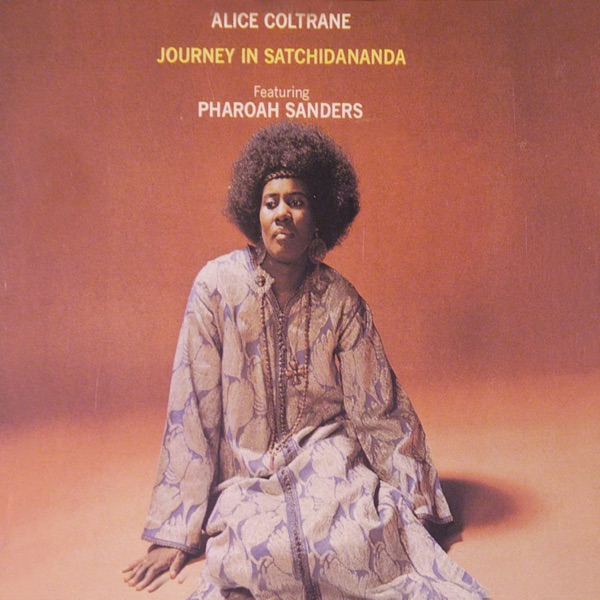
Alice Coltrane: Honored in the Hall of Fame
#alicecoltrane #vinyl #indiemusic
Alice Coltrane, born Alice McLeod in 1937, had a brief but impactful partnership with tenor saxophonist John Coltrane. During their time together, they toured internationally, released significant jazz albums, and shared a spiritual journey. However, Alice’s contributions to jazz extend far beyond her association with John. She is being recognized by the DownBeat Hall of Fame for her groundbreaking work as a composer and performer, leaving behind an impressive collection of diverse pieces and a revered legacy.
Alice grew up in Detroit, a city renowned for its thriving Black music scene. She began her musical journey with classical training but quickly shifted to playing gospel piano and organ in church by the age of nine. Her older half-brother, bassist Ernie Farrow, influenced her as she followed his footsteps in the jazz clubs of Detroit. It was there that Alice likely first discovered the innovative music of jazz harpist Dorothy Ashby.
Encouraged by John, Alice decided to pursue the harp as a means of jazz expression. She continued her jazz education in Paris, where she played as an intermission pianist and collaborated with tenor saxophonist Lucky Thompson, whom she had previously worked with in Detroit. During her time in Paris, she also had the opportunity to learn from bebop pianist Bud Powell. Additionally, Alice married singer Pancho Hagood, who had performed with notable jazz figures like Dizzy Gillespie, Thelonious Monk, and Miles Davis. Alice had her first child, Michelle, with Hagood, whom John later adopted.
In 1963, Alice met John Coltrane in New York at Birdland, where she was part of vibist Terry Gibbs’ rhythm section and John was leading his influential quartet. Within three years of this fateful encounter, Alice and John became a couple and had two children together, John Jr. and Ravi. They married in 1965, and Alice joined John’s band as a pianist after McCoy Tyner decided to leave. John’s exploration of free and modal forms and his incorporation of world music elements reflected not only his evolving musical interests but also a shared spiritual quest with Alice.
During her time as part of John’s rhythm section from 1966 to 1967, Alice recorded numerous albums, many of them live, all released through the Impulse! label. Only one of these albums, “Live At the Village Vanguard Again!”, came out during John’s lifetime. These recordings showcased Alice’s growing proficiency in free improvisation as she played alongside avant-garde artists like saxophonist Pharoah Sanders and drummer Rashied Ali. Sadly, their creative collaboration ended abruptly when John passed away from liver cancer in July 1967, just four months after the birth of their third son, Oran.
Despite the tragic loss, Alice released her first solo record, “A Monastic Trio,” on Impulse! within a year. The album marked the debut of the Alice Coltrane Quartet, featuring Sanders on woodwinds, Jimmy Garrison on bass, and Ben Riley on drums. It also introduced Alice’s talent as a harpist. In 1968, she self-released “Cosmic Music,” which Impulse! later picked up. The album captured a studio session between Alice and John’s quartet from early 1966. In the years following John’s passing, Alice’s musical output expanded rapidly. As a composer and bandleader, she released 12 studio albums over the next decade, incorporating more harp and Eastern musical instruments into her music and adding strings to her compositions.
This musical evolution was a reflection of Alice’s personal transformation, which began during her time with John as they embraced Eastern spiritual philosophies. In 1970, Alice became a follower of Indian guru Swami Satchidananda and later Sri Sathya Sai Baba. She relocated to Southern California in 1972 and established the Vedantic Center near Los Angeles in 1975. Alice changed her name to Turiyasangitananda, meaning the “Transcendental Lord’s Highest Song of Bliss.” By 1978, Turiya, as she was now known, immersed herself fully in ashram life as a spiritual leader, distancing herself from the jazz world.
In the same year, Warner Bros. released “Transfiguration,” a live recording of a concert at UCLA’s Schoenberg Hall in Los Angeles. On this album, Alice played organ and piano alongside bassist Reggie Workman and drummer Roy Haynes. She overdubbed strings onto some of the cuts, adding to their meditative quality. It would be 26 years before she released another commercial album. However, Turiya continued to compose and record music privately at the ashram, distributing her new compositions informally on cassette tapes under the ashram’s Avatar label. These compositions showcased simpler melodic and chordal structures, diverging from the energetic bebop and free improvisation of her earlier work. One of the earliest known recordings under this new direction was 1982’s “Turiya Sings,” which marked her venture into vocal music as she sang in Sanskrit and accompanied herself on the Wurlitzer organ.
In addition to her music, Turiya became an author, publishing several books through the Avatar imprint. These books detailed her spiritual journey, sharing her experiences, verses, and teachings. In 2004, at the request of her sons Ravi and Oran, Turiya returned to the studio for her final commercial jazz release, “Translinear Light,” on Impulse!. The album featured an intergenerational ensemble, including bassist Charlie Haden and drummer Jack DeJohnette, along with Turiya’s sons. It offered a retrospective of her musical journey, incorporating gospel hymns, devotional chants, John’s compositions, and her own pieces.
When Turiya passed away in January 2007, she left her legacy, along with John’s, to her surviving children Michelle, Ravi, and Oran, all accomplished musicians in their own right. This legacy includes the preservation of The John & Alice Coltrane Home, the house on Long Island where John wrote “A Love Supreme” and where Alice recorded six of her leader albums. Recognizing its significance in Black culture, the National Trust for Historic Preservation designated the home as a National Treasure in 2018. The mission of the home is to be a force for good, embodying John’s words and Alice’s prayer for humanity.
Learn more about Alice Coltrane
